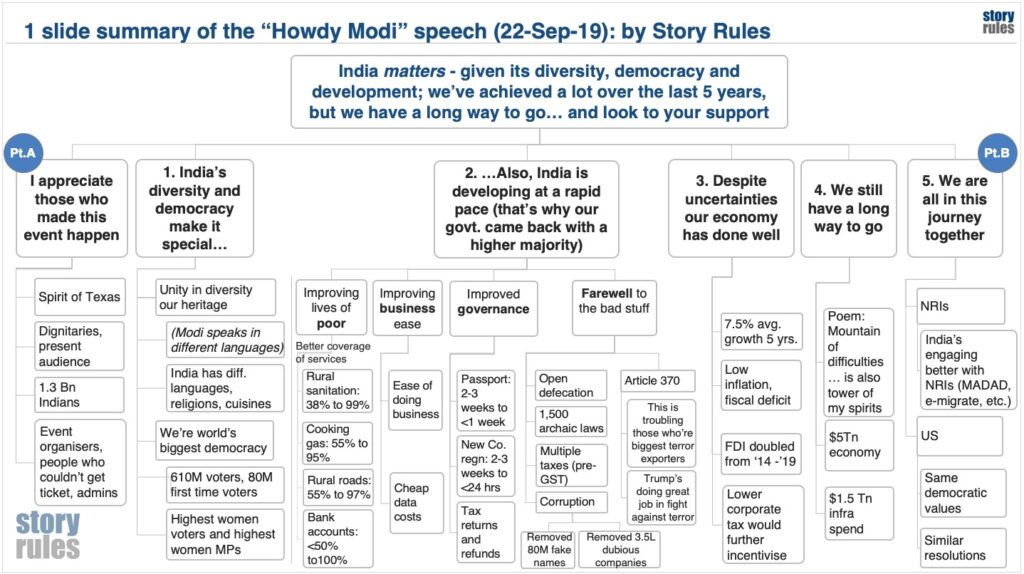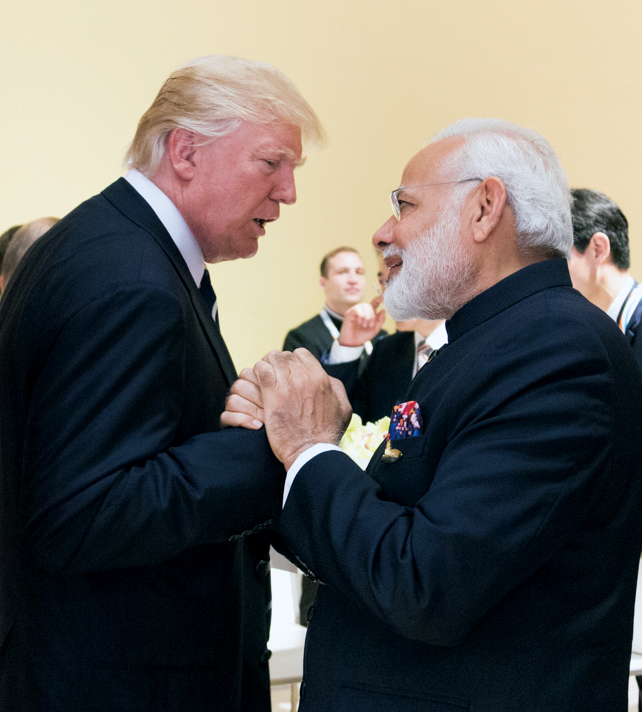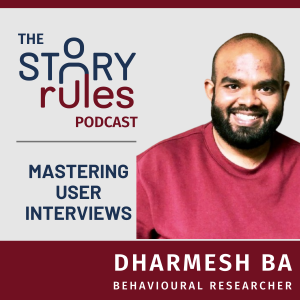Decoding the ‘Howdy Modi’ speech: A 1-slide summary
In front of 50,000 raucous spectators and millions more tuning in, India’s Prime Minister Narendra Modi made a historic speech to Indians and the world on 22nd September 2019 in Houston, USA.
Acknowledged as a stirring orator, Modi used all of his rhetorical flourishes to mesmerise the audience.
But apart from his oratorical skill, what impressed me was the speech’s content itself.
Sure it had the usual suspects: the playing-to-the-gallery lines, the too-clever-by-half puns (“Energy at the NRG stadium is a witness to the growing synergy between the two nations…” Groan) and the exhortations for standing ovations…
But if you look beyond these (essential) crowd-pleasing manoeuvres, you would find a solid, structured talk, with five clear points made – each supported by clear numerical evidence^.
What are these five messages? Let’s find out.
Using the Pyramid Principle to decode the speech
In the past, I’ve used the Pyramid Principle to analyse critical communication by business leaders – such as shareholder letters written by Jeff Bezos (2019 and 2018) and Warren Buffett (2019).
This is the first time I’m applying it to a political speech – and it’s surprisingly robust.
Here’s my take on the speech:

Fascinating stuff right? And yet so simple in its messaging!
Just to clarify: All the ‘higher-level’ messages in the slide above (the ones numbered 1 to 5), have been ‘derived’ by me – i.e. as per my reading, these are the over-arching points that the speaker is making (without actually spelling them out).
But they are very useful – if you read through them, you really get the speech’s clarity of thought.
What was good
There were 3 things that impressed me about the writing:
- Clear flow and structure: which is apparent – whether you read the five messages ‘horizontally’ or delve deeper into them, ‘vertically’.
- Balancing multiple audiences (with the need for editing): The speech was addressing 3 audiences at the same time – the Americans, the NRIs and most importantly the domestic Indian audience. It managed to masterfully engage each of them. In doing so, it could have become a long, unwieldy mess – instead, the content was sharp and focused. Great editing!
- Strong use of norm-variance: Almost no number was given without a relevant norm (sanitation coverage improved from 38% to 99%). I have written earlier about the importance of this critical storytelling principle.
What could have been better?
Tough to say – but one area where they could have elaborated more is message 4: on the Way Forward.
I would have liked if the speech had a point on “These are the 3 big areas where we would focus our attention going forward” (for e.g. infrastructure, health and education/skills).
(Incidentally, my choice of these three areas has nothing to do with my past experience of having worked in the infrastructure, healthcare and skills sectors!)
In summary, I found the speech-writing stellar.
In a gloomy global scenario, India has a relatively good story to tell. This speech ensured that it was told well.
*****
^ A disclaimer: This post is not attempting to endorse the speech’s content or verify the accuracy of its claims. Assuming the points are accurate, my endeavour is to study the storytelling principles used.
Featured image credit: By The White House from Washington, DC [Public domain] from Wikimedia Commons







